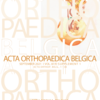Prevention of post-traumatic elbow stiffness using Botulinum toxin
Elbow ; trauma ; stiffness ; Botulinum toxin ; Monteggia fracture ; fracture
Published online: Oct 08 2021
Abstract
Botulinum toxin (Botox) has been used in orthopaedic surgery for facilitating rehab after tendon repairs, and for the treatment of lateral epicondylitis. To our knowledge, role of Botox in postoperative management of elbow fracture has not been studied. Our aim was to investigate the efficacy of Botulinum Toxin (Botox) in preventing post-traumatic elbow- stiffness.
We performed a retrospective study dated between 2007 and 2017. This included all patients with inter- condylar distal humerus fractures, and Monteggia fractures treated by a single surgeon. A matched control group based on fracture pattern and age was created for comparison. For functional outcome, we assessed the arc-of-motion (AOM) after six weeks, three months, six months, and final follow up for evaluation.
Of the 30 patients that met the inclusion criteria, 15 patients (50%) received Botox injections. Inter- condylar distal humerus fractures were identified in 11 cases (n=11/15 ; 73.3%) and Monteggia fractures in 4 cases (n=4/15 ; 26.7%). The mean age was 52.2 years and the dominant side was affected in 7 patients (47%). Significant differences in elbow extension for proximal ulna and radius fractures after six-weeks (extension 26±4.04 degree vs. 45.63±7.45 degree ; p<0.05) were observed.
Elbow extension was improved significantly at 6 weeks postop for intercondylar fractures. No com- plications related to Botulinum toxin were identified. Botox appears to be safe and effective in improving elbow motion in some cases.
Level of Evidence : Therapeutic III, retrospective study.
